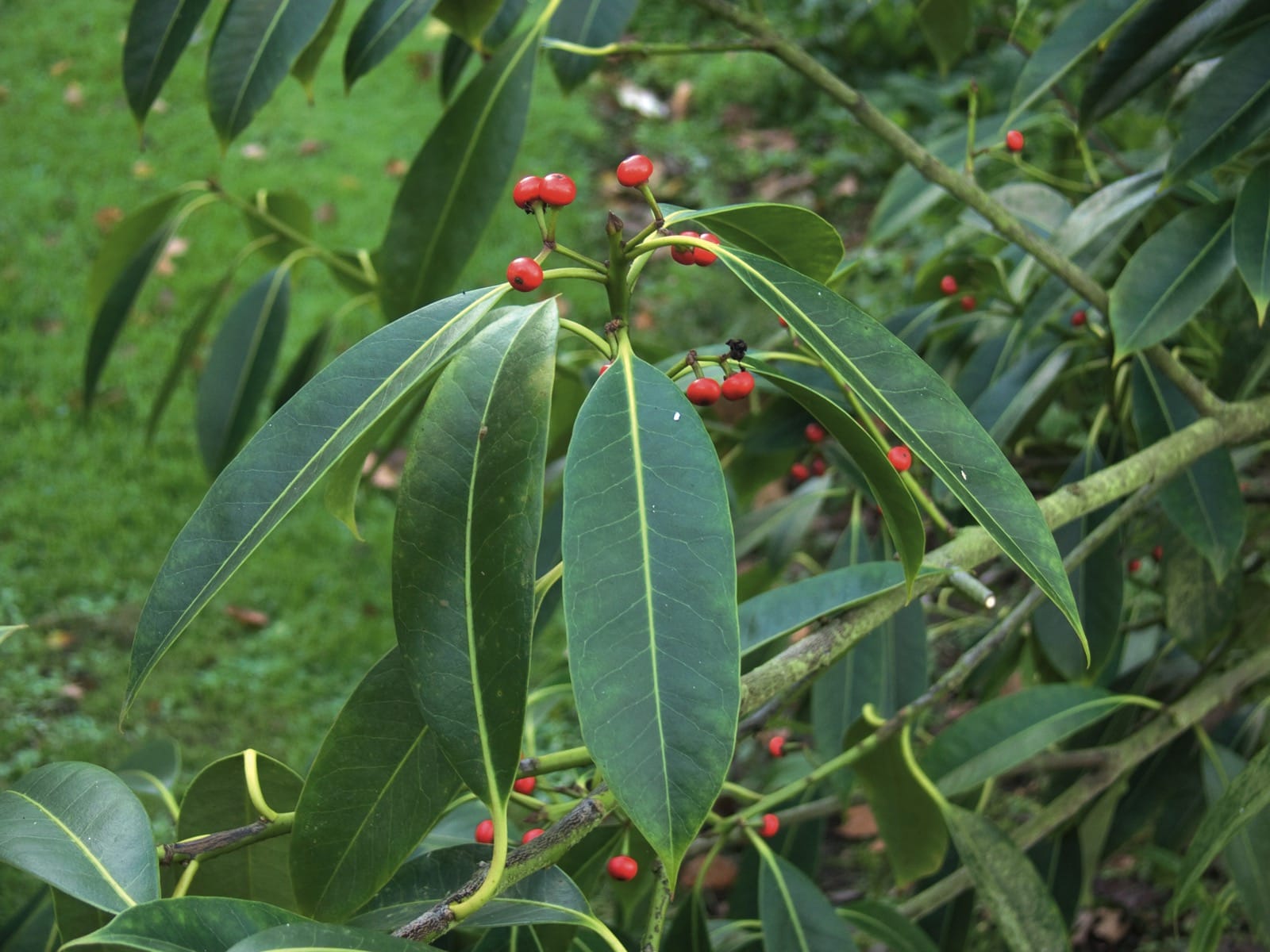Ilex linii
Credits
Article from New Trees by John Grimshaw & Ross Bayton
Recommended citation
'Ilex linii' from the website Trees and Shrubs Online (treesandshrubsonline.
Genus
Other taxa in genus
- Ilex × altaclarensis
- Ilex aquifolium
- Ilex bioritsensis
- Ilex buergeri
- Ilex cassine
- Ilex ciliospinosa
- Ilex corallina
- Ilex cornuta
- Ilex crenata
- Ilex cyrtura
- Ilex decidua
- Ilex dipyrena
- Ilex fargesii
- Ilex forrestii
- Ilex geniculata
- Ilex glabra
- Ilex hayatana
- Ilex hookeri
- Ilex integra
- Ilex intricata
- Ilex kingiana
- Ilex laevigata
- Ilex latifolia
- Ilex macrocarpa
- Ilex melanotricha
- Ilex mitis
- Ilex montana
- Ilex nothofagifolia
- Ilex opaca
- Ilex pedunculosa
- Ilex perado
- Ilex pernyi
- Ilex purpurea
- Ilex rotunda
- Ilex rubra
- Ilex rugosa
- Ilex serrata
- Ilex shennongjiaensis
- Ilex spinigera
- Ilex verticillata
- Ilex vomitoria
- Ilex yunnanensis
Tree to 10 m. Branchlets purplish black, glabrous, lenticels inconspicuous. Leaves evergreen, 7–13 × 3–4 cm, oblong or oblong-elliptic, leathery, glabrous, 10–14 secondary veins on each side of the midrib, veins slightly raised on both surfaces, margins entire, recurved, apex acuminate; petiole glabrous, 1–1.3 cm long. Flower details unrecorded. Infructescence cymose, solitary and axillary; fruiting peduncles 0.5–0.7 cm long, densely pubescent. Fruit one to three per infructescence, ellipsoidal, 0.5–0.7 cm diameter, with five pyrenes. Fruiting August to November (China). Chen et al. 2006. Distribution CHINA: Fujian, Guangdong, Jiangxi, Zhejiang. Habitat Evergreen broadleaved or pine forest between 500 and 1200 m asl. USDA Hardiness Zone 8. Conservation status Not evaluated. Illustration NT399.
The only specimen of Ilex linii traced in cultivation is at Ness. Growing healthily, it was over 2 m tall when seen in 2006, and has large, rather pale green leaves. It was received as seed from Shanghai Botanic Garden in 1985, under the name I. elmerrilliana S.Y. Hu; its first flowering and fruiting in 1996, however, led to its eventual identification as I. linii. It seems quite hardy in the windy conditions of Ness, where it has now grown outside for many years, and should clearly be attempted elsewhere.
In New Trees this was spelled limii, corrected for TSO in January 2021. No other specimens have been located and the Ness plant stubbornly refuses to be propagated (T. Baxter pers. comm. 2020).

